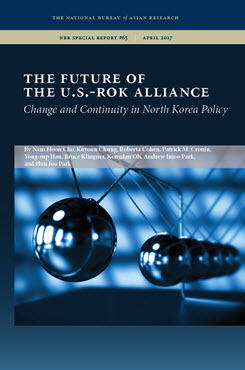Charting the Path of Korean Unification amid the Changing Security Landscape in Northeast Asia
This essay examines South Korea’s unification policy and argues that it is inherently incompatible with North Korea’s strategic goals, which emphasize regime survival and unification on the regime’s own terms.
EXECUTIVE SUMMARY
MAIN ARGUMENT
Significant political and generational differences exist within South Korea regarding unification with the North. Whereas conservatives tend to be realists who insist on reciprocity in negotiations and view North Korea with mistrust, progressives have a more favorable view of the utility of engagement and economic assistance. Meanwhile, younger generations who did not experience the Korean War tend to have more negative views about unification than older generations. Moreover, the changing regional security landscape in Northeast Asia and conflicting regional expectations for unification could dramatically alter the end state of the Korean Peninsula. North Korea’s byungjin strategy of pursuing both economic and nuclear development has affected the calculations of South Korea’s unification policy. If the U.S. and South Korea continue to pursue a risk-averse strategy, the Korean Peninsula will remain split between two hostile Koreas and fail to achieve denuclearization. By contrast, pursuing a tailored policy toward different North Korean actors will produce an environment in which social perspectives in the North can converge with those in the South, ultimately charting a favorable pathway toward unification.
POLICY IMPLICATIONS
- South Korea must persuade the Trump administration to strengthen its determination to convince North Korea that the consequences of continued nuclear development outweigh the benefits.
- The U.S. should maintain its strong commitment to the region, and the U.S.-ROK alliance should be the cornerstone of this commitment.
- Washington must diversify its methods for affecting North Korean policy; in particular, it should work to apply pressure to the regime by adopting methods that can shift elites’ policy preferences and erode popular support for the Kim Jong-un regime.


